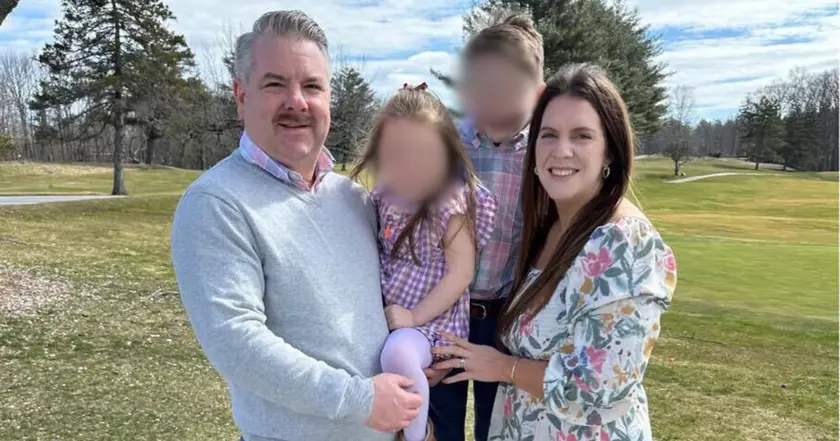T4K3.news
New Hampshire tragedy reported
A Madbury mother killed her husband and two children before taking her own life; one child survived.

A Madbury mother shoots her husband and two children before taking her own life, leaving one young child alive as investigators seek motive.
New Hampshire mother kills husband and two children before taking her own life
Police say Emily Long, 34, shot her husband Ryan and two of their three children at their Madbury home on Monday night before taking her own life. The surviving child, a three-year-old boy, was found unharmed and is in the care of his grandparents as investigators examine what happened. The bodies were found beside a handgun at the residence, and authorities continue to gather details to determine a motive.
Key Takeaways
"Ryan was bedridden, from what I gather he was undergoing chemotherapy."
Health status of Ryan Long described by a family friend
"Emily had been fairly open about struggling with severe depression and not knowing how to explain to the kids that they were going to lose their father."
Observer notes about Emily Long's mental health disclosures
"They were incredible people and parents."
Tributes from a friend or neighbor
"No one could have imagined this would happen."
Community reaction
The tragedy underscores how caregiver stress, illness, and financial strain can converge in a single moment of crisis. Ryan Long faced a brain cancer diagnosis and a slowing household income, while Emily had recently left a job and faced uncertainty about keeping the home. Such pressures do not excuse violence, but they help explain why families crumble when support networks fail or feel unreachable. Communities must ask whether existing mental health and family services are accessible to those in need and how they respond when warning signs appear.
Highlights
- Pain hides in a house full of love
- Caregiver fatigue can push families to a breaking point
- When help feels out of reach, silence can become deadly
- A single moment can ripple through a lifetime
Grief will linger, and the real work is in strengthening support for families at risk.
Enjoyed this? Let your friends know!
Related News

Four dead in NH family tragedy linked to illness

New Hampshire family tragedy prompts call for support

Tragic New Hampshire family killed in suspected murder-suicide

Tragic murder suicide shocks New Hampshire family

New Hampshire family tragedy linked to online posts

Fort Stewart Shooting Suspect Identified

UNM shooting tragedy claims young life

Waterworld inquest opens after tragedy
